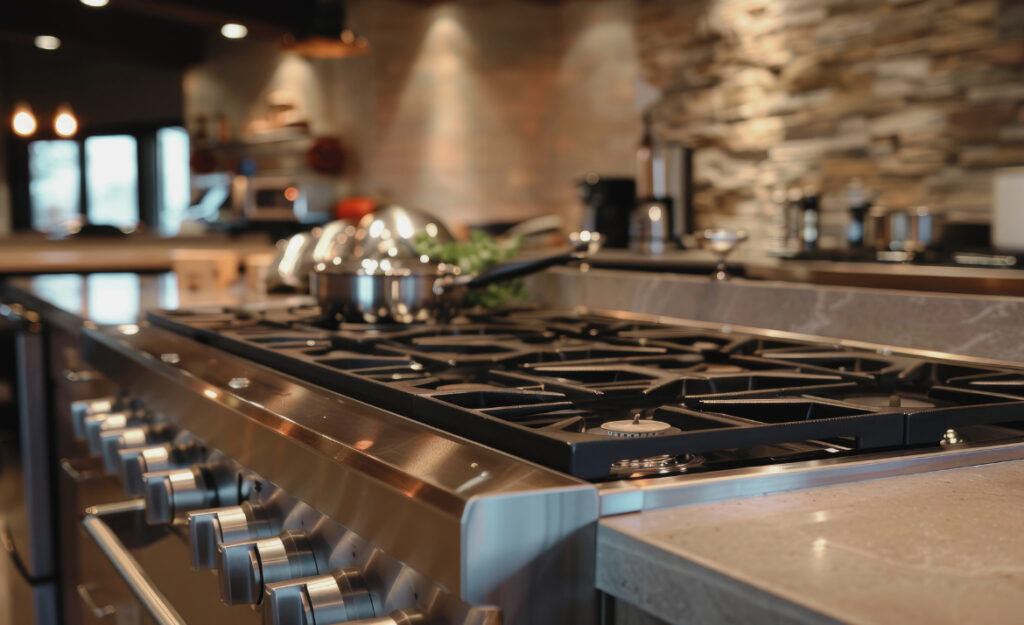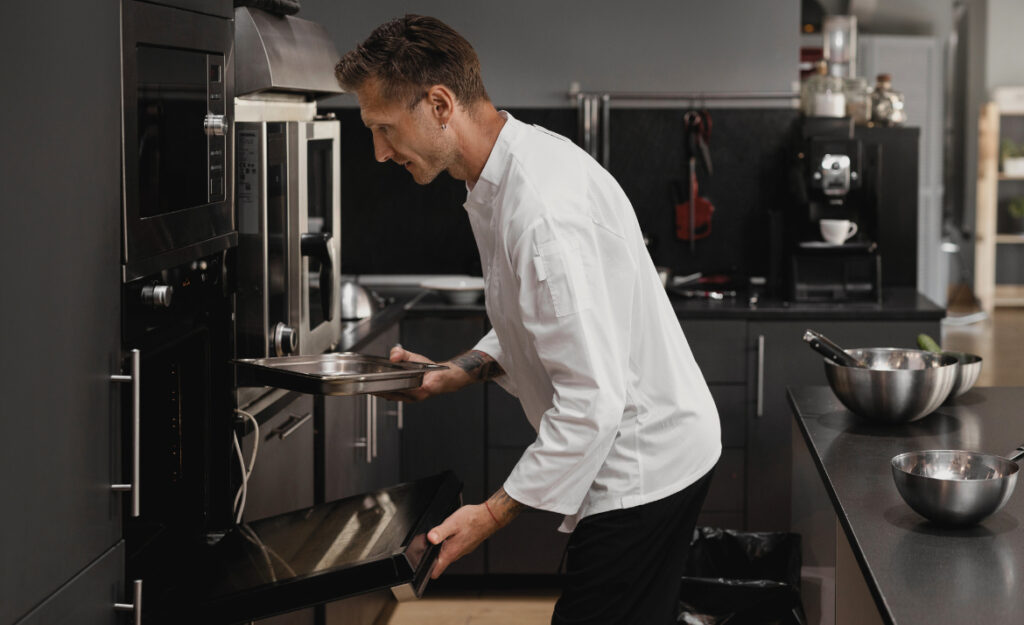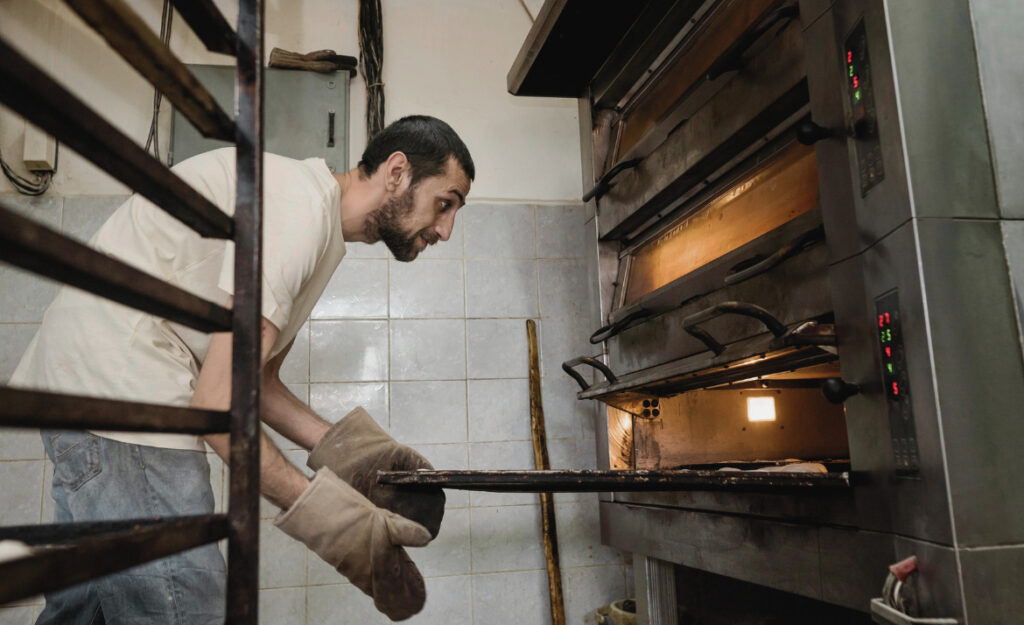
The rush of a busy kitchen is like a well-paced orchestra—every beat matters. When head chefs talk about kitchen upgrades, upgrade stove features often spark heated debates among seasoned pros. The right features can transform daily routines and bring real-time advantages.
Industrial kitchens thrive on structure and speed. The pressure isn’t just about output, but consistency and reliability. When teams rely on old tech, small inefficiencies add up, eating into productivity and causing frustration among staff during peak periods.
Exploring the latest in upgrade stove features isn’t just a tech flex; it’s essential for any kitchen crew looking to work smoother, cut waste, and sharpen their timing. You’ll find actionable ideas here to foster smarter, more seamless workflows in the industrial kitchen space.
Integrating Multi-Function Burners Improves Station Versatility Right Away
Expanding burner capabilities pays off on every shift—teams get greater adaptability at each cooking station. Upgrade stove features like multi-function burners let you switch from rapid boiling to delicate simmering without swapping equipment.
Adaptable burners support chefs during course changes and high-volume orders. Instead of shuffling pans or waiting for specialty equipment, staff simply adjust heat zones and move to the next step. Efficiency gains show immediately in prep routines.
Scenario: Lunch Rush Calls for Seamless Transitions
Consider this: The lunch service board lights up, with soups, sautés, and sears all running at once. With advanced burners, a cook can say, “Sauce down, blast up veggies,” without leaving their station. It’s a visible upgrade.
When burners provide gradual temperature control, team members keep their workflow fluid. Hands stay on the task, body language relaxed but focused—no darting across the kitchen to borrow heat.
During stressful volume spikes, one chef’s burner doesn’t hold up the team. Seamless transitions like this become repeatable each day, especially at stations handling multiple dish types.
Micro-Process: Rotating Tasks Without Swapping Equipment
Assign one burner for three uses: prep soup, move straight to blanching greens, then finish with a gentle reduction—all without changing setups. Staff save time by simply flicking a dial or adjusting the power setting.
This process means fewer interruptions, less physical movement, and limited risk of burns from shifting hot pans between specialized burners. Fewer pauses keeps the pacing tight.
You reinforce accountability at individual stations, too—ownership of space stays clear, so staff are empowered to act quickly and safely.
| Burner Type | Core Feature | Use Case | Next Step |
|---|---|---|---|
| Open Flame | Direct heat, quick adjust | Rapid searing, high heat sauté | Use for high-turnover stations |
| Induction | Precision control, energy-saving | Custards, sauces, small portions | Deploy for fine work and holding lines |
| Griddle Insert | Flat surface, even heating | Pancakes, eggs, sandwiches | Install during breakfast or brunch |
| Combination Burner | Swappable heat zones | Mixed menu tasks | Assign to main crew leader |
| Wok Ring | High, concentrated heat | Stir fry, Asian dishes | Rotate in for specialty service |
Prioritizing Precise Temperature Controls Drives Recipe Consistency Every Shift
Staff discover increased accuracy by focusing on stoves that give exact temperature feedback and rapid corrections. Digital controls, especially, lead to uniform flavor and presentation on crowded lines.
Recipes that depend on delicate timing, like confections or seafood, show the merit of this upgrade. Consistency enforces the kitchen’s reputation, and precise controls reduce chef-to-chef variation on signature items.
Stabilize Results with Calibration Alerts
Modern stoves with built-in calibration prompts flag temp drift or swings, making it easy for kitchen leads to schedule quick recalibrations. This reduces wasted product during peak prep and service times.
- Set digital targets for sauces to avoid burning or undercooking during rush periods.
- Automate reminders for recalibrating burners after big menu changes or deep cleans, so no one forgets critical checks.
- Use visual indicators to confirm each burner is ready before assigning fast-moving tasks, preventing guesswork.
- Log consistent temperature ranges in a shared sheet—staff can then spot trends and catch emerging issues fast.
- Provide team learning sessions by timing boil or simmer targets, reinforcing accuracy through daily repetition.
Uniformity becomes the baseline expectation, not a nice-to-have bonus.
Team Collaboration Grows With Shared Temperature Logs
Digital tracking gives a high-level snapshot of which burners are running within spec. Cross-shift handoffs become clearer—staff see at a glance what’s ready and what needs a tweak.
- Update logs twice per shift to maintain an audit trail, building collective accountability for the whole kitchen.
- Pair logs with color-coded status tags, so new team members can quickly orient themselves at any burner.
- Establish clear scripts for reporting deviations: “Station two’s reading spiked at lunch—reset before next round.”
- Integrate logs into on-the-job training, letting chefs track their own learning curves over time.
- Choose systems that integrate easily with existing tablets or mobile devices for rapid access on the floor.
This tracking process prevents slip-ups when tired teams hand off during late closings or busy turnovers.
Installing Programmable Burners Reduces Repetitive Decision Fatigue
Programmable stoves cut down on mental strain by letting chefs set precise repeat actions—like timers, cycles, or heat boosts—one time, then reuse as needed. Relying on memory or manual resets slows everyone down.
Staff respond well to clear, automated prompts. A well-programmed burner supports multitasking, reminding the team: “Switch pans now, rotate trays, or drop ingredients at the right moment,” using gentle beeps or digital countdowns.
Automated Timing Sequences Keep the Line Moving
Preset timers for main dishes streamline the line. “Three minutes to flip,” for a big batch of grilled chicken, becomes part of the muscle memory after only a few rounds. Downtime drops sharply.
This automation means any team member can take over mid-service, glance at the control, and hit the next step with confidence. No awkward asking, “Did this start?” or “Is this one done yet?”
Preset temperature curves on programmable stoves adapt to specific menu cycles. Batch dessert sheets, for instance, need a steady ramp and a quick finish—these cues become foolproof with digital steps.
Training New Staff via Repeatable Scripts
With scripts preloaded into programmable features, onboarding cooks can run simple “do this, then this” routines. The onboarding pace increases, and errors drop.
A trainer can point to a screen: “Press menu A for pasta—don’t touch until timer beeps.” The trainee builds trust quickly, learning to rely on stove cues more than guesswork.
This system supports cross-training, too. Staff switching from grill to sauté lines use the same digital checklist, reinforcing the kitchen standard through consistent upgrade stove features.
Optimized Cooktop Layouts Cut Down on Unnecessary Movement
A thoughtful stove configuration limits staff traffic. Consider a “pod” system: stoves with grouped burners tailored to the key menu areas. Proximity to utensils and pantry staples slashes downtime and creates a sense of flow.
Teams that map zones tightly—protein, vegetable, sauce—reduce overlap and collisions, both physical and procedural. It’s easy to spot when a layout flows or leads to bottlenecks at peak moments.
Scenario: Rethinking Station Boundaries
On a hectic Friday night, one team member asks, “Can we swap the sauce and protein station?” Watch how foot traffic drops—fewer cross-paths, faster plate assembly, and tools stay close at hand. Efficient layouts make these swaps simple to trial.
Testing layouts with real service scenarios is like shifting furniture to find the right fit before a party. Physical proximity tells the team what adjustments work.
Document changes and run a week with the new setup. Reinforce what sticks and adjust as needed based on actual results, not just theory.
Checklist for Implementing New Layouts
Walk through each day with an eye on choke points where people cluster. Move burners or tools to spread teams evenly across the line.
Color-code utensils, pans, and tools for each zone to clarify territory and prevent mix-ups under pressure. Stay nimble: keep layout adjustments flexible as the menu evolves.
Rotate teams regularly between zones to test if workflow still makes sense as recipes or processes update. Make these trial changes a standing calendar feature—keep iterating for efficiency.
Enhanced Safety Features Increase Staff Confidence and Reduce Injuries
Modern safety upgrades—automatic shut-offs, cool-grip handles, and flame failure devices—reduce accidents but also give peace of mind, especially for newer staff. That assurance supports risk-taking for speed and creativity in the hot zone.
When workers feel protected, they move more naturally and maintain focus. The kitchen culture reflects this enhanced safety: fewer worried glances, more eyes on the food, fewer injuries to bandage.
Rules for Safety Protocols and Immediate Action Steps
Set a rule that all crew members check flame status before walking away. Establish an “announce and verify” system—everyone says, “Burner safe,” before breaks or handoffs.
Display quick reminders near each station: “Turn off,” “Check grip,” “Rest hot pans only on marked surfaces.” These cues save seconds and eliminate uncertainty, day or night.
Encourage solid routines: wipe spills instantly, double-check shut-off lights before leaving. These small habits, reinforced by advanced stove tech, reward teams with fewer surprises.
Built-In Smart Connectivity Streamlines Scheduling and Troubleshooting
Smart stoves let managers check diagnostics or adjust settings remotely. Busy shift leaders can review reports, spot error codes, or lock controls between turnovers without hovering over the line all day.
Simple app-based alerts warn the team when machine parts need cleaning or replacement. This tech compresses downtime, keeping more burners in play during crucial prep and service windows. Teams adapt to new maintenance rhythms, shaving off hours otherwise wasted waiting for urgent repairs.
Workflow Scenario: Proactive Maintenance Scripting
Picture a sous-chef’s phone buzzing with a notice: “Burner 3—due for descaling.” He waves the message, announces, “Clear for quick fix!” and resets while others prep. Instructions and reminders arrive with no confusion.
Use smart systems to log each intervention, ensuring that teams pass info between shifts without repeating manual checks. Troubleshooting scripts, like “If alert A, follow path B,” help teams self-rescue without a manager present.
Integrate phone alerts into the opening and closing checklist for a seamless transition. Up-to-the-minute feedback lets everyone act before small issues escalate into costly outages.
Updating Cleaning Systems to Accelerate Sanitation and Reduce Downtime
Sleek stove surfaces, removable burner parts, and guided cleaning cycles eliminate hassle during sanitation rounds. These upgrade stove features aren’t just about saving time—they bolster food safety and extend the lifespan of expensive equipment.
Clear cleaning protocols support every shift. When maintenance becomes a rhythm, teams see fewer unexpected shutdowns and reduce arguments during late-night deep cleans. Even after a marathon service, the kitchen feels approachable, not daunting.
- Schedule mini-cleans every two hours to remove residue before it bakes on and gets stubborn.
- Label removable parts by station for quick swaps—“swap, soak, reset”—cutting deep clean time by half each week.
- Provide each crew with dedicated cleaning caddies tailored for their zone, improving buy-in on shared sanitation responsibilities.
- Train teams to follow an “if you spill, you clean” rule with visible, easy-access wipes and towels at every work zone.
- Rotate inspection duty so all staff have opportunities to spot neglected areas, rewarding top-notch stations with early sign-out on Fridays.
This approach creates pride in a well-run kitchen, as the physical work environment reflects the excellence of the team effort.
Bringing It All Together: Sustainable Gains from Modern Stove Upgrades
Every industrial kitchen faces tight deadlines and soaring expectations. Upgrade stove features close the efficiency gap—automating, blending, and organizing what manual skills and old habits can’t always cover. The outcome is a shift team that clicks into place.
Efficient kitchens deliver better food, faster—a win for owners, chefs, and guests alike. Consistent upgrades earn loyalty within the team, enticing talent and building a culture where innovation matters as much as experience.
Small changes, repeated daily, accumulate into big savings and greater satisfaction. Prioritizing the right upgrade stove features sparks momentum in any kitchen, setting standards your crew will value for years to come. Take one step today to see results tomorrow.
Frequently Asked Questions
What’s the most immediate upgrade for boosting industrial kitchen workflow?
Install programmable burners with timers and preset functions. These features automate repetitive steps, reduce guesswork, and promote consistency. Teams see an instant effect—quicker handoffs and fewer burned dishes during rush periods.
Are smart connectivity stove systems difficult to implement in an older kitchen?
Modern smart connectivity integrates with most layouts through modular add-ons or wireless controls. Staff require simple introductory training, and benefits outweigh learning curves: maintenance alerts, error diagnoses, and remote adjustments streamline busy days.
How does temperature precision impact food quality during bulk production?
Precision in temperature controls eliminates wide flavor swings on signature dishes and cuts down on food waste from overcooking. This control ensures a reliable customer experience: diners get consistent quality, and teams waste less product during high-volume shifts.
Is safety improved with newer upgrade stove features?
Yes—modern stoves have built-in safety checks, automatic shut-offs, and visible flame indicators. These features minimize injuries, support confident movement on the line, and raise accountability, especially during staff training and high-turnover periods.
How do optimized layouts improve staff morale in open industrial kitchens?
Well-mapped cooktop layouts reduce confusion and help teams move with purpose, cutting down on accidental collisions. Morale rises when each chef knows their space, works efficiently, and senses ownership—making every shift smoother and more enjoyable.



